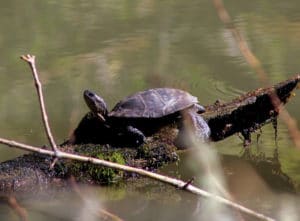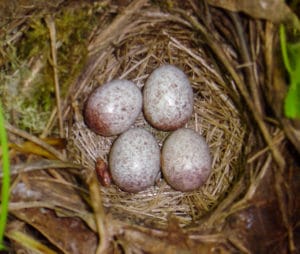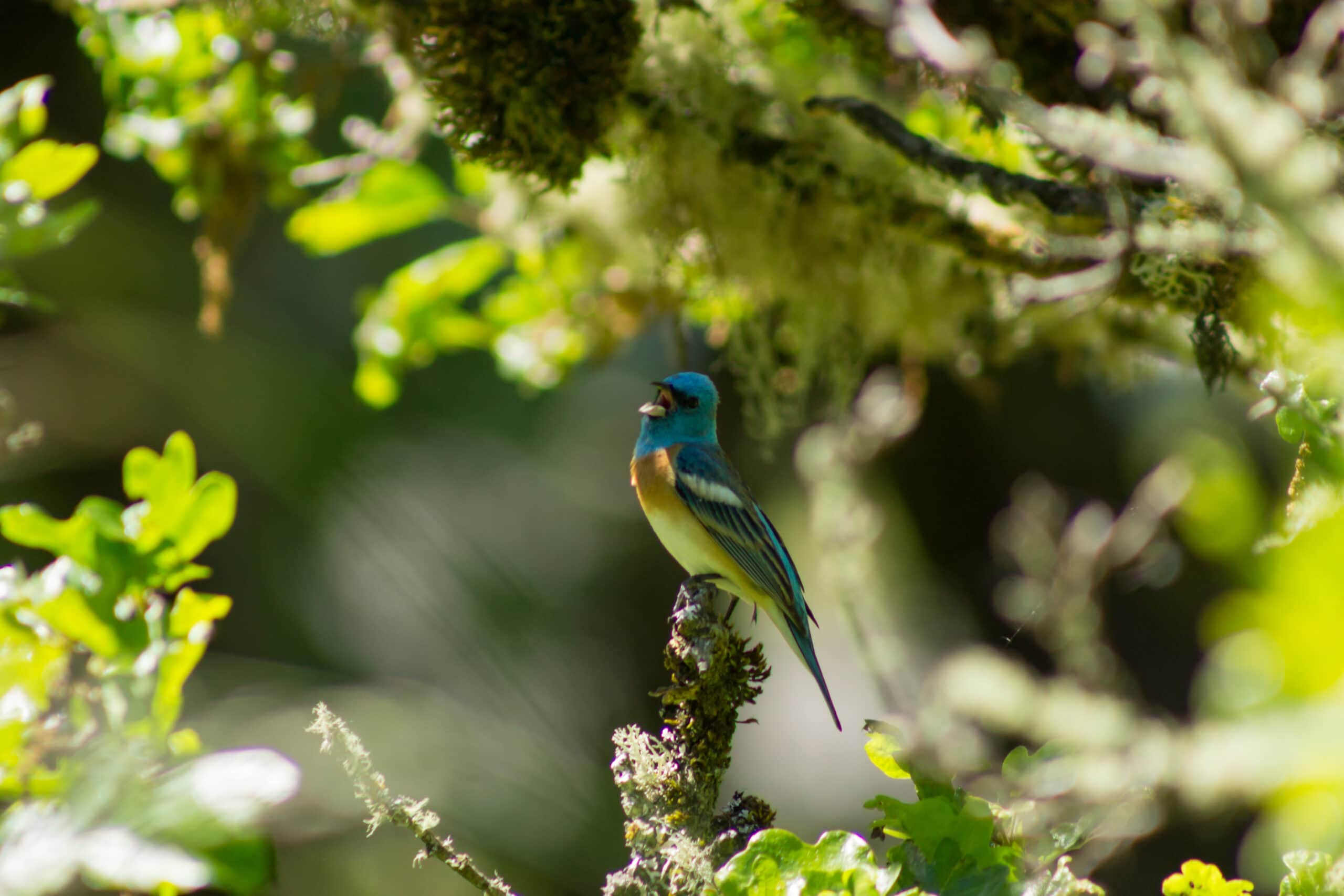Mount Pisgah Arboretum encompasses a diversity of habitats including oak savanna, bottom-land riparian forest, wetlands, prairies, and conifer forests and oak woodlands on the hillsides. These habitats are home to many species of mosses, lichens, fungi, and flowering plants. In total, 67 plant families, 231 genera, and 339 species are identified on our published plant list.
Lists and Guides
- Mount Pisgah Arboretum Plant List (Revised in 2011, needs an update)
- Mount Pisgah Arboretum Bird List (Revised in 2018)
- Bees of the Willamette Valley (2019, Revised 2020)
- Oak Gall Wasps of Mount Pisgah (2022)
- Field Guide to Select Lichens of Mount Pisgah (2022)
For an in-depth look at native plant species (growing conditions, pollinator and bird attractants, etc.) around the Willamette Valley, click here.
Wildlife

Wildlife is abundant within the Arboretum. Our water garden is home to a population of threatened western pond turtles, as well as a number of amphibian species. Mammals found here represent a broad cross-section of the diversity that can be found in our region. A visit in the warmer months reveals the diversity of insect life as well. Dozens of species of dragonflies, damselflies, native bees, grasshoppers, butterflies, and others abound. The Arboretum is one of the most popular birding sites in the area, playing host to a wide array of migratory and resident song birds, raptors, and waterfowl. Bird walks are held on a monthly basis. Download our bird list for more details.
Gardens
Though most of the Arboretum is dedicated to the preservation of native habitats, there are some very attractive planned and planted gardens. The Patricia M. Baker Memorial Wildflower Garden is a 2-acre garden in the River Meadow showcasing the rich beauty of the Pacific Northwest’s native flora. Other planted areas include an entrance garden with 89 species of woody plants including 57 Rhododendron species and 13 native and introduced tree species including maples, oaks, magnolias, pines and Metasequoia.
Habitat Management

The Arboretum is committed to using an ecologically sound approach to all aspects of site development and maintenance. Habitat management actions and methodologies are guided by our Habitat Committee.








